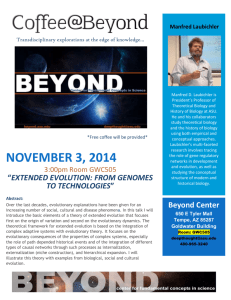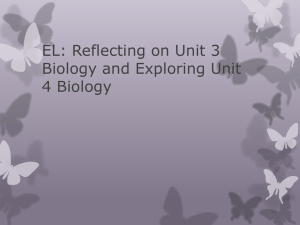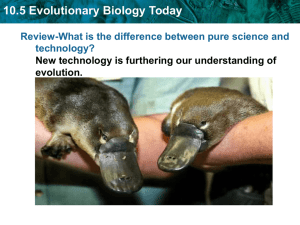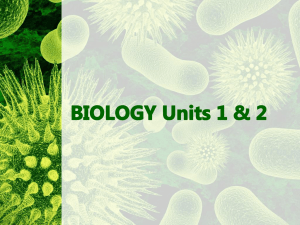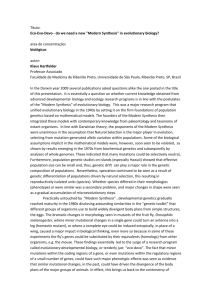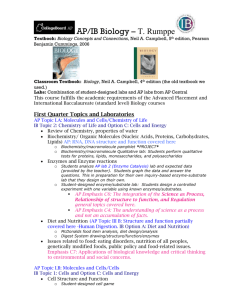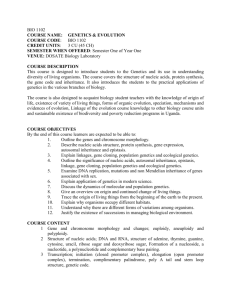Biology curriculum Evolution draft
advertisement
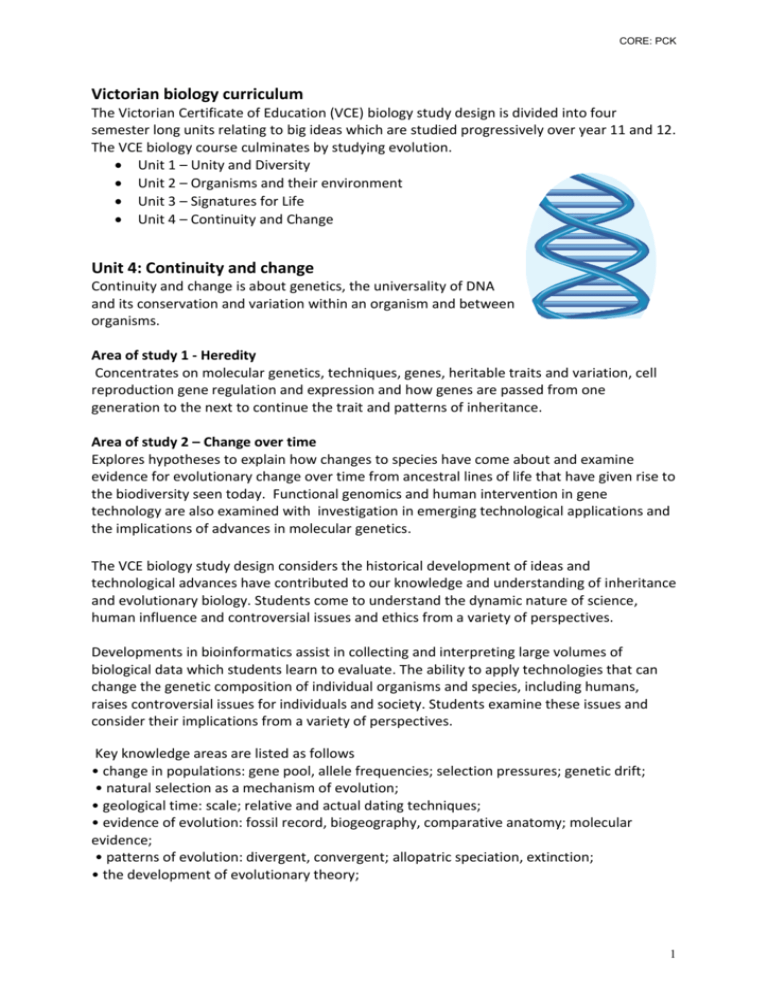
CORE: PCK Victorian biology curriculum The Victorian Certificate of Education (VCE) biology study design is divided into four semester long units relating to big ideas which are studied progressively over year 11 and 12. The VCE biology course culminates by studying evolution. Unit 1 – Unity and Diversity Unit 2 – Organisms and their environment Unit 3 – Signatures for Life Unit 4 – Continuity and Change Unit 4: Continuity and change Continuity and change is about genetics, the universality of DNA and its conservation and variation within an organism and between organisms. Area of study 1 - Heredity Concentrates on molecular genetics, techniques, genes, heritable traits and variation, cell reproduction gene regulation and expression and how genes are passed from one generation to the next to continue the trait and patterns of inheritance. Area of study 2 – Change over time Explores hypotheses to explain how changes to species have come about and examine evidence for evolutionary change over time from ancestral lines of life that have given rise to the biodiversity seen today. Functional genomics and human intervention in gene technology are also examined with investigation in emerging technological applications and the implications of advances in molecular genetics. The VCE biology study design considers the historical development of ideas and technological advances have contributed to our knowledge and understanding of inheritance and evolutionary biology. Students come to understand the dynamic nature of science, human influence and controversial issues and ethics from a variety of perspectives. Developments in bioinformatics assist in collecting and interpreting large volumes of biological data which students learn to evaluate. The ability to apply technologies that can change the genetic composition of individual organisms and species, including humans, raises controversial issues for individuals and society. Students examine these issues and consider their implications from a variety of perspectives. Key knowledge areas are listed as follows • change in populations: gene pool, allele frequencies; selection pressures; genetic drift; • natural selection as a mechanism of evolution; • geological time: scale; relative and actual dating techniques; • evidence of evolution: fossil record, biogeography, comparative anatomy; molecular evidence; • patterns of evolution: divergent, convergent; allopatric speciation, extinction; • the development of evolutionary theory; 1 CORE: PCK • evolutionary relationships: conservation of genes; genome phylogeny; mitochondrial evolution; • hominid evolution: patterns, origin; • interrelationships between biological, cultural and technological evolution; • human intervention in evolutionary processes – selective breeding – application of gene technologies: cloning of organisms; transformation; stem cell differentiation; genetic screening, gene therapy. Our CoRe has assimilated these key knowledge areas into 3 big ideas or themes which can be used to teach and assess the topic of evolution. Genetic change, either over time by evolution or human intervention in genetic engineering by its very nature stirs scientific debate and argument which is integral to the VCE study design. Our CoRe reflects this and embraces the higher order skills of hypothesis, research, evidence evaluation, interpretation, collaboration, debate and presentation. As students conclude their studies in secondary biology they are prepared for a range of further study and vocational possibilities. References Victoria http://www.vcaa.vic.edu.au/vce/studies/biology/biologystd.pdf 2
